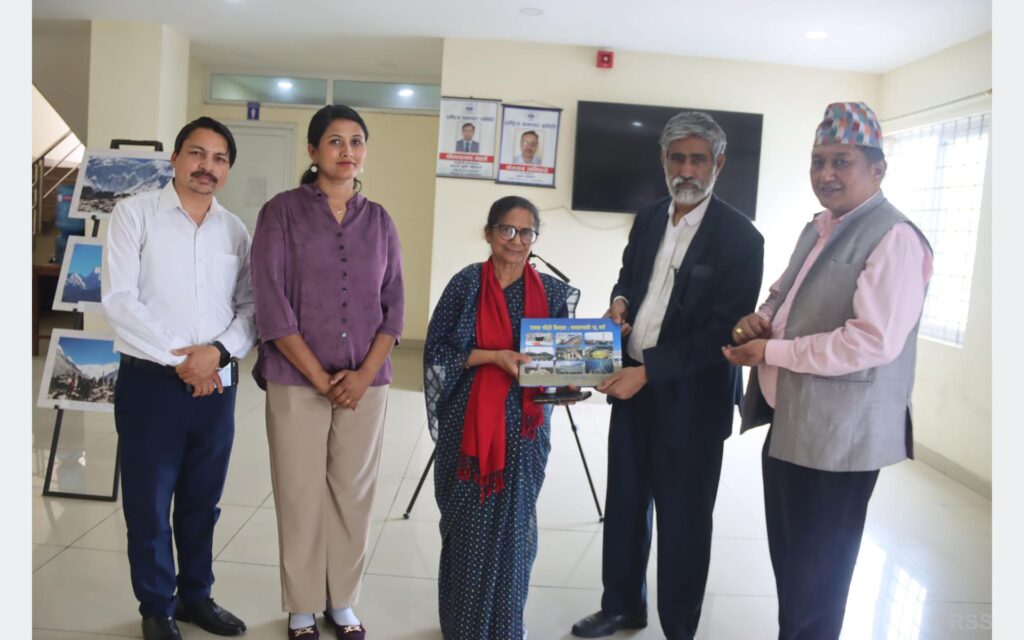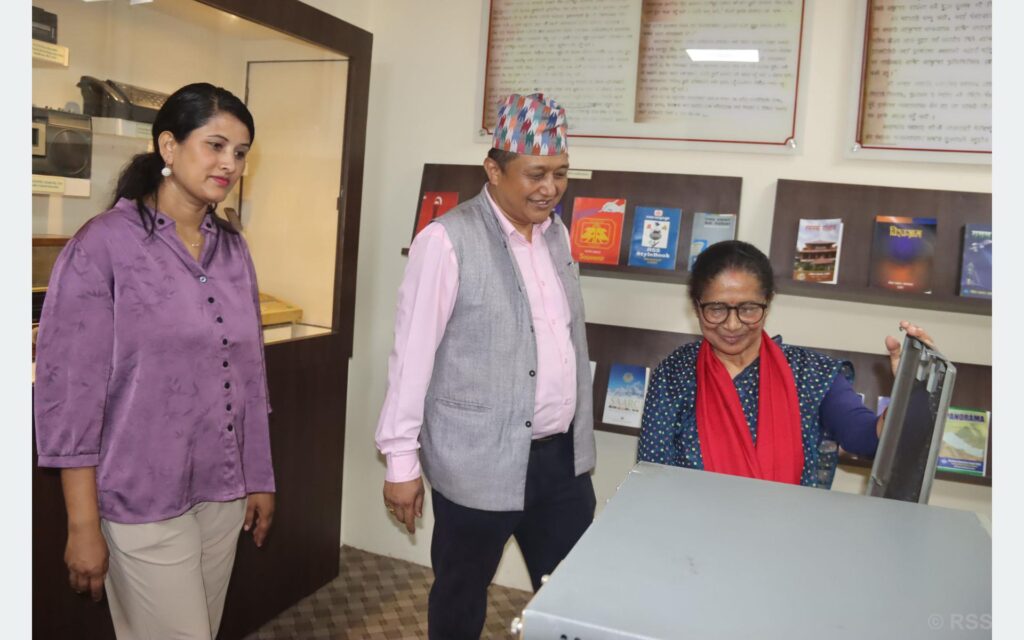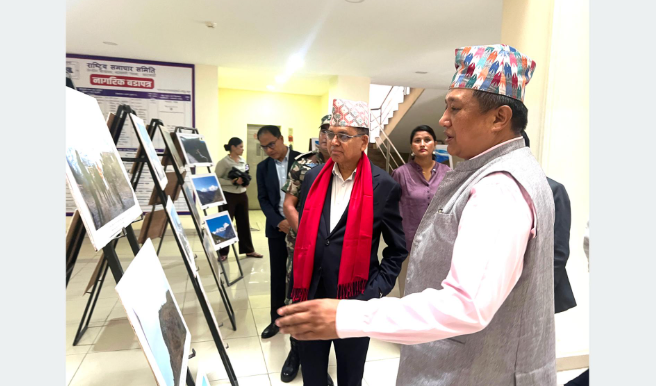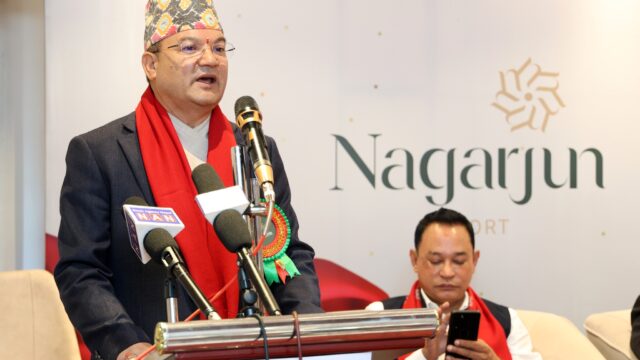Minister for Physical Infrastructure and Transport, Devendra Dahal, stated that the development of tourism infrastructure remains a high priority for the government. He made these remarks while observing the photo exhibition titled “Mountain Tourism: Our Pride, Our Identity” organized by the National News Agency (RSS) on the occasion of the 18th Republic Day of Nepal.
Government Focused on Tourism Infrastructure
Speaking after the exhibition, Minister Dahal emphasized that tourism development and promotion are inseparable from infrastructure enhancement, and the government is working with focused intent to boost connectivity, accessibility, and amenities at major tourist destinations across the country.
“The exhibition showcasing important tourist locations through powerful visuals has made me very happy. These images beautifully reflect Nepal’s natural beauty and tourism potential,” Minister Dahal remarked. He encouraged the organizers to continue such efforts in the future, adding that effective international promotion through such exhibitions can significantly enhance Nepal’s tourism development.

Prioritizing Densely Populated Areas and Local Production
Minister Dahal also outlined that the government is currently prioritizing infrastructure development in densely populated tourist zones, ensuring that locals benefit directly from increased tourism activity. One of the central aims of this strategy, according to him, is to create better access to markets for domestically produced goods and promote their consumption through tourism.
“We’re focusing on infrastructure that supports both tourism and the local economy. Roadways, bridges, and market access points are all being planned to ensure that communities can benefit from the tourism industry,” he said. Additionally, Minister Dahal emphasized the government’s plan to strengthen trilateral relations through tourism, indicating a broader regional integration approach for Nepal’s tourism diplomacy and trade.
Linking Infrastructure to Economic Prosperity
Minister Dahal asserted that investments in tourism-centric infrastructure not only boost tourist inflow but also have a direct impact on employment and economic growth. “By making key infrastructure like roads and bridges a priority, we can stimulate regional tourism and elevate national prosperity,” he explained.
Highlighting the importance of connecting Nepal’s remote natural treasures with the mainstream economy, the Minister reiterated that infrastructure will serve as the foundation for sustainable tourism growth, especially in regions with high natural and cultural value.
Exhibition Showcased Nepal’s Natural and Cultural Beauty
The ongoing photo exhibition, which began on Jestha 11, features 96 photographs that capture the essence of Nepal’s eastern to western mountain ranges, Himalayan lifestyle, and major tourism destinations. These visuals not only celebrate the country’s majestic landscapes but also bring attention to the need for conservation, connectivity, and promotion of these remote and often underrepresented areas.
The exhibition aligns with the broader national objective of fostering mountain tourism as a distinct and competitive tourism product. By highlighting diverse images from various provinces, the event seeks to raise awareness about Nepal’s unique geography and cultural richness, encouraging domestic and international travel.

RSS Urged to Continue Its Promotional Role
In his concluding remarks, Minister Dahal appreciated the role of the National News Agency (RSS) in organizing the exhibition and encouraged it to continue initiating such impactful programs. He stressed that RSS’s contributions could serve as an important platform to promote Nepal’s tourism brand globally, especially by leveraging storytelling through visuals.
The Minister’s visit and message have reemphasized the vital connection between infrastructure and tourism, underlining the government’s integrated vision for tourism-led economic development. As Nepal navigates its post-pandemic recovery, such initiatives provide a roadmap to building a more resilient and inclusive tourism economy, powered by connectivity, local empowerment, and strategic promotion.






